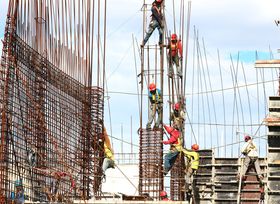Asbestos management plan: What does it involve?

As the term suggests, an asbestos management plan refers to comprehensive inspection, testing, and removal of asbestos particles in building structures. It is an overview of strategies, activities, and ongoing measures undertaken to efficiently manage and eliminate the asbestos presence on site.
Asbestos when exposed to the atmosphere can be hazardous to human health and the environment. When inhaled, naturally occurring fibrous silicate mineral irritates and scars the lung tissue, causing serious pulmonary and other diseases.
Although the usage of asbestos as a construction material is now banned across varied countries, they are still present in the building structures built before the 1980s. Hence, all concrete structures built during that period are thought to have high asbestos content and must undergo asbestos testing to confirm and eliminate the fibers responsibly.
Why is asbestos management important?
Owing to the adverse impact of asbestos fibers on human health, a professional asbestos management plan is essential for all commercial and industrial property owners and construction companies. Despite the ban on the usage of asbestos as a construction material, humans are at high risk of suffering from diseases due to asbestos exposure.
The consequences of asbestos exposure can take decades to arise making it a slow poison for on-site personnel. An initial inspection can help in identifying the asbestos-containing materials, their age, the safest removal options, etc. Asbestos can be found anywhere such as under the carpets, inside the walls, and hidden in the ceilings. The inspection involves real-time air and site monitoring to confirm the presence of asbestos.
The inspection surveys are followed by making a detailed plan that enlists all activities and measures to be undertaken to remove and suppress the asbestos content. The management plan is aimed at strategic removal and quarantining of the asbestos particles while making the space safe for residing people.
Also, asbestos testing and removal are imperative for organizations to stay compliant with the relevant laws of the state. In many countries, industrial and commercial units must ensure asbestos regulation and control measures for environmental well-being. It is the building management’s responsibility to show that they have acknowledged the presence of asbestos and are actively taking steps to combat or eliminate it.
Asbestos Management Explained
Every commercial, as well as industrial structures built during or before the 2000s, must have an asbestos management plan worked out for the safety of people in and around the premises. This plan involves initial on-site inspection, testing, and removal measures tailored to the specific situation.
While asbestos removal is always a preferred option when detected in buildings, a large amount of asbestos is difficult to remove and therefore should be suppressed or quarantined. This decision can only be made once the asbestos presence is identified and lab-tested to determine its toxicity.
A standard asbestos management plan can be divided into three segments that are discussed as follows:
- Inspection or survey
A thorough on-site survey is a foremost part of the asbestos management plan that aims at identifying the presence of asbestos particles in a given space through varied testing and monitoring technology. The inspection phase determines key details such as how much asbestos is present, the asbestos type, location accessibility, the potential ways to get rid of them safely, etc. The initial survey report also helps in taking instant measures to regulate and minimize the risk of asbestos exposure in real time.
- Lab testing
The testing segment is absolutely important to determine the type of asbestos and appropriate ways to deal with them. Asbestos testing involves collecting samples from the site and sending them for a laboratory test for further analysis and report-making purposes. The samples are collected by professionals who maintain that all regulations are followed to avoid contaminating the samples. These lab results help in making an effective asbestos management plan that ensures minimum damage.
- Removal
Once the asbestos particles are identified and lab-tested, asbestos professionals will guide you on the removal and management aspect based on the present asbestos content. If the particles are present in small quantities, they can be professionally removed without causing any major harm to the people around them. On the other hand, if the asbestos particles are extremely hazardous in nature that can pose threat to the person removing them, they can be quarantined or suppressed in place to restrict their exposure to the atmosphere.
Final Note
An asbestos management plan is vital for any building owner or authority that was constructed or refurbished before the 2000s. Old buildings and concrete structures that do not have an active asbestos management plan are non-compliant with legal laws and are risking the lives of people residing or working there. While being an irresponsible act, this can also hold businesses and building owners liable for non-compliance and hefty fines.




